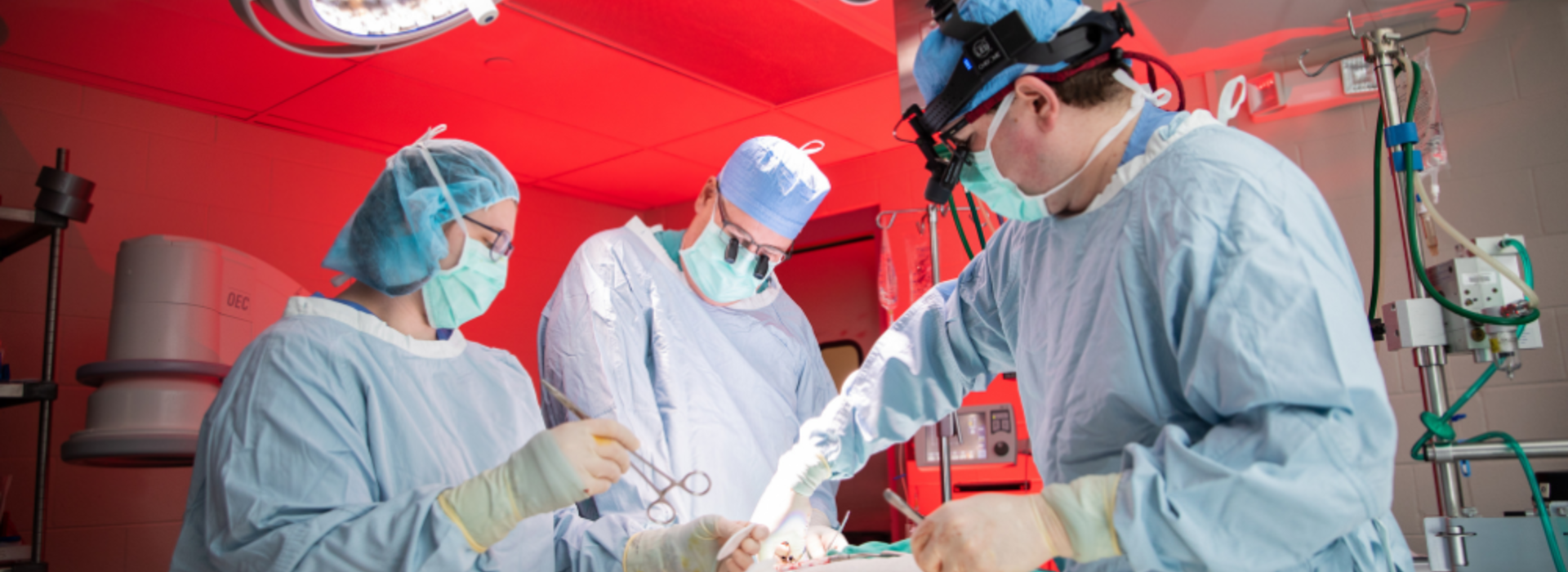
University of Minnesota Medical School’s Experimental Surgical Services celebrates 40 years of Advancing Health
University of Minnesota Medical School’s Experimental Surgical Services celebrates 40 years of Advancing Health
ESS staff are dedicated to advancing a legacy of improving human health by furthering research of surgical techniques and devices.
This fall, the University of Minnesota (U of M) Medical School’s Experimental Surgical Services Laboratory (ESS) celebrated its 40th anniversary. Housed within the Department of Surgery, ESS is the only public pre-clinical research center in the country, and is at the forefront of medical research, pushing the boundaries of what is possible in the field of surgery by testing and perfecting medical devices and surgical techniques before they go to the Food and Drug Administration (FDA) for commercial approval.
“Almost every heart valve in use today came through us at some point,” says program director Richard Bianco.
The lab, a human-grade operating suite complete with cutting edge surgical technology, is available to U of M faculty, as well as industry professionals from all over the world. There are many private contract research organizations (CROs) in the United States where researchers can prepare their devices for studies, but ESS is a cut above them all.
“For cardiac devices that are safe for clinical use, we see less than 5% model mortality in our studies,” says laboratory research director John Carney, who adds that this number is much lower than ESS’ CRO counterparts. “Being part of an academic medical center, we hold ourselves to a higher standard than other private laboratories.”
These incredible outcomes are the direct result of what makes ESS different from CROs: the support of an entire university of educators, physicians and scientists.
“We specialize in heart valves and cardiac devices, but we do a little of everything,” says Bianco. “We bring in faculty that we need if we don’t have the expertise, which is one of the advantages of being at a university.”
Because ESS is entirely public, they publish their findings to improve techniques. Their goal is to make the biggest impact on human health while honoring the research models that make it all possible.
“We publish the use of our models and put that out into the scientific literature,” Carney emphasizes. “Our methods and techniques are freely open to investigators at any center, and ultimately we’ve really improved the use and refinement of models in medical research.”
But the work of ESS isn’t just about developing new techniques and tools. The team is also focused on training the next generation of surgeons and medical professionals. Carney describes the undergraduate staff as “the backbone of ESS” and enjoys overseeing undergraduate research studies. Additionally, ESS has opened its doors to give tours to high school students from across Minnesota. Bianco, who was part of the Medical School’s admissions committee for many years, says that at least once during every admissions cycle, an applicant wrote in their personal statement that touring ESS as a teenager sparked their interest in becoming a doctor.
The staff at ESS are constantly exposed to groundbreaking devices and techniques and say that the future of the field of surgery lies in minimally invasive devices.
“Everything’s becoming smaller, everything is minimally invasive, which is better for the patient,” says Bianco.
“A lot of our work now is evaluating these new devices that are intended to be delivered through catheters as opposed to open heart surgery,” Carney adds. “We’ve been very successful at that, and there's going to be more of this technology.”
Another focus area at the lab is tissue-engineered technology, designed to grow with the patient and eventually be replaced by their own cells. This technology is designed to reduce the number of operations needed for children with complex congenital defects.
For business manager Mignon Finn, seeing the innovation happening at ESS makes her job incredibly fulfilling.
“Before coming to ESS, my work was just not very rewarding,” Finn recalls. “That’s what really kept me here, because the work we’re doing is so interesting and important.”
ESS is setting a new standard for medical research, patient care and encouraging future leaders in medicine. Looking toward the next 40 years of ESS, Bianco hopes the center’s legacy will be twofold.
“We’re opening doors and getting students into the professions that they need to be in,” he remarks. “And we’re getting these devices and therapies into the black bags of doctors that are practicing the medicine. We’ve had an impact on human health, and a dramatic one.”
The Department of Surgery will be honoring the 40th anniversary of ESS during the 16th Annual Earl E. Bakken Symposium in November, which will include speakers from the industry attending and discussing ESS’ contributions to the medical device ecosystem in Minnesota and beyond.